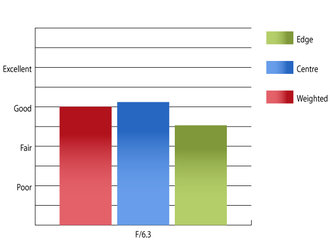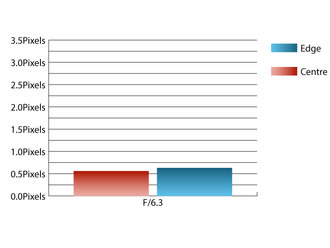Tokina Reflex 300mm MF Macro Lens Review
Tokina Reflex 300mm MF Macro Performance
Mirror based optics like this can be an acquired taste. Generally they have a reputation for lower resolution, lower contrast and ugly shaped out of focus highlights and lack of aperture control. This lens does not buck the trend in any way. Contrast is visibly lower, which can also hamper accurate focusing and the doughnut bokeh is certainly present. The aperture of this lens is fixed at a fairly slow f/6.3, which means either plenty of light, or a high ISO setting will be required for any action photography.As far as resolution is concerned, during testing good sharpness was recorded in the centre of the frame although this drops to fairly good sharpness towards the edges of the frame. In the field, it will be rare that this can be replicated and results will often look much worse, partly due to difficulties in getting the lens focused accurately and limits of the catadioptric optical system.
 Resolution at 300mm | How to read our chartsThe blue column represents readings from the centre of the picture frame and the green is from the edges. Averaging them out gives the red weighted column.The scale on the left side is an indication of actual image resolution. The taller the column, the better the lens performance. Simple. For this review, the lens was tested on a Panasonic Lumix DMC-G3 using Imatest. |
Catadioptric lenses normally display little or no chromatic aberrations as this phenomenon can only occur when the path of light is altered by refraction, rather than reflection. A slight amount of CA was detected by Imatest, hovering around half a pixel in width. In practice this low level of CA will be barely noticeable.
 Chromatic aberration at 300mm | How to read our chartsChromatic aberration is the lens' inability to focus on the sensor or film all colours of visible light at the same point. Severe chromatic aberration gives a noticeable fringing or a halo effect around sharp edges within the picture. It can be cured in software.Apochromatic lenses have special lens elements aspheric, extra-low dispersion etc. to minimize the problem, hence they usually cost more. For this review, the lens was tested on a Panasonic Lumix DMC-G3 using Imatest. |
Falloff of illumination towards the corners of the frame is well controlled. The corners of the frame are only 1.12 stops darker than the centre. Imatest only managed to detect 0.992% pincushion distortion too, although the distortion does have an almost indistinguishable wave pattern to it, which may make corrections difficult to apply afterwards if absolutely straight lines are paramount.
Add your message
Login required
Please login here or if you've not registered, you can register here. Registering is safe, quick and free.
Please login here or if you've not registered, you can register here. Registering is safe, quick and free.
photodo Stats
1102 lenses
428 MTF tests
74 in-depth photodo reviews
100+ users join each day
Help the lens community by reviewing or rating a lens today via our lens search
428 MTF tests
74 in-depth photodo reviews
100+ users join each day
Help the lens community by reviewing or rating a lens today via our lens search
Latest Lens Reviews
- Chinon 28mm f/2.8 Vintage Lens Review
- Canon EF 70-200mm f/4L IS II USM Lens Review
- Samyang AF 85mm f/1.4 EF Review
- Sigma 70mm f/2.8 DG Macro Art Review
- Samyang AF 24mm f/2.8 FE Review
- Meike 50mm f/1.7 Review
- Tamron 70-210mm f/4 Di VC USD Review
- Lensbaby Burnside 35mm f/2.8 Review
- Asahi Super Takumar 50mm f/1.4 Review
- Asahi Super-Multi-Coated Takumar 135mm f/3.5 Review
